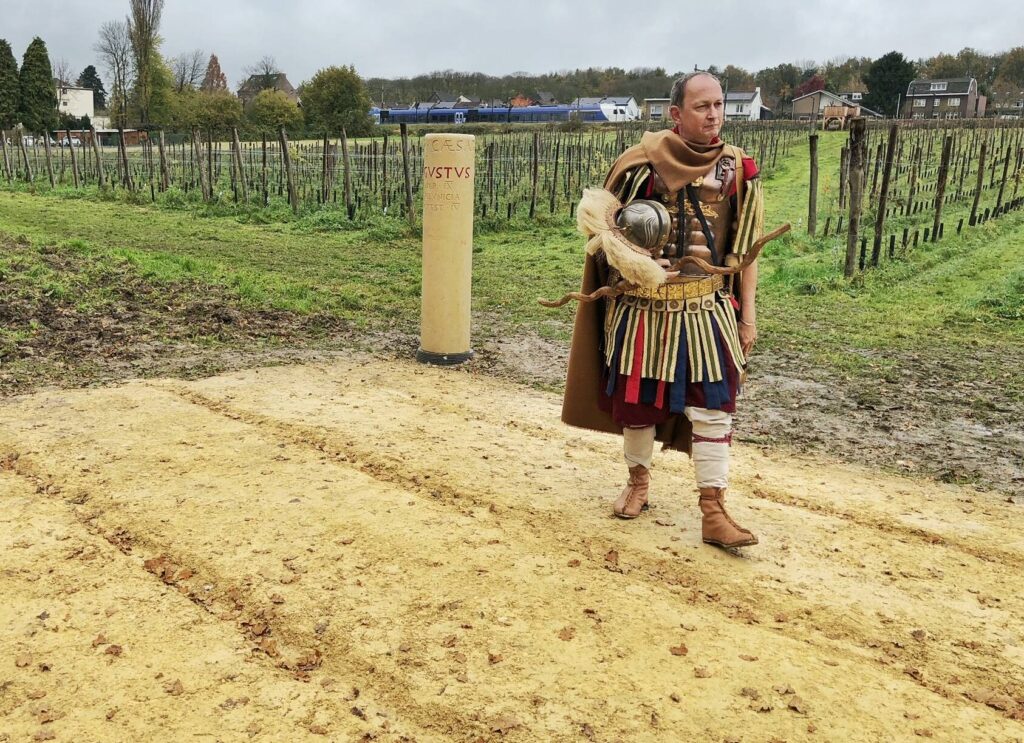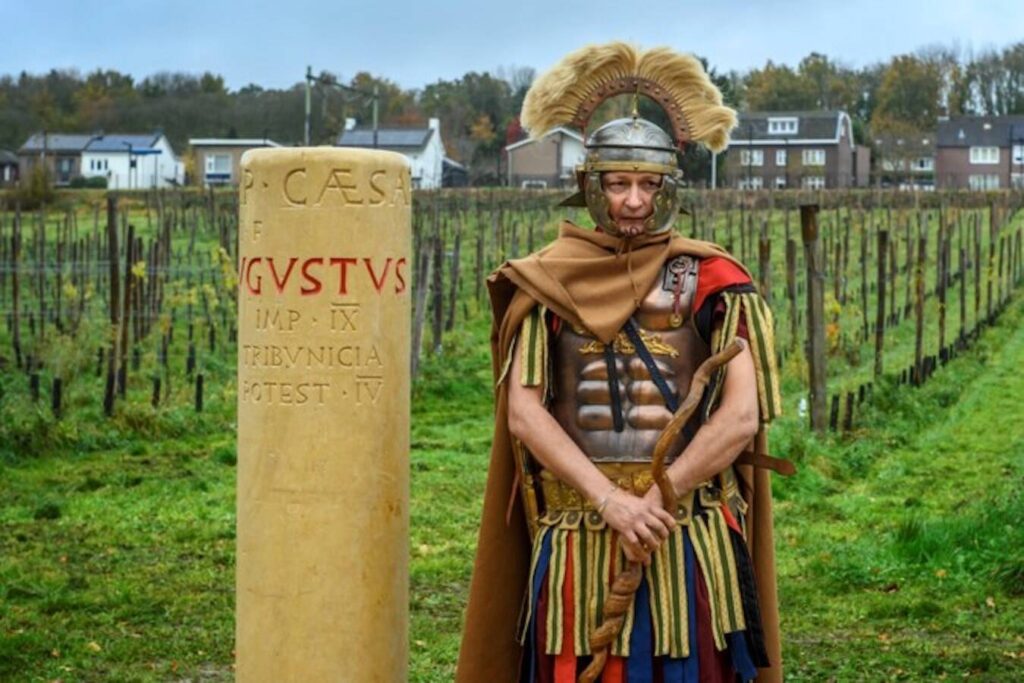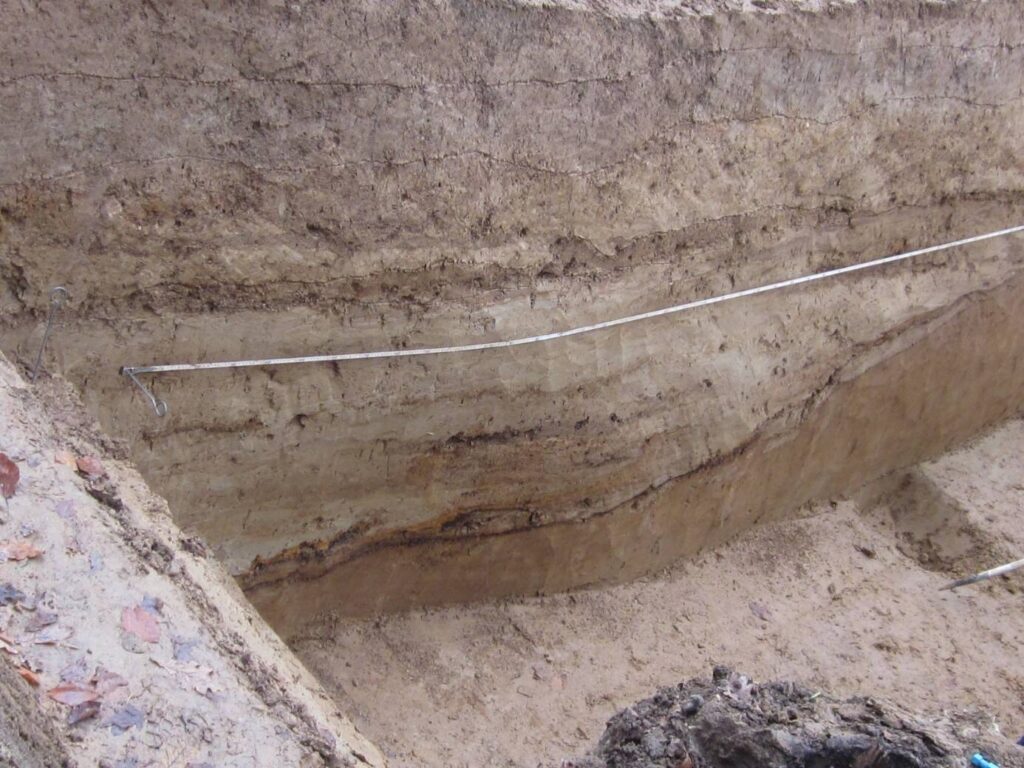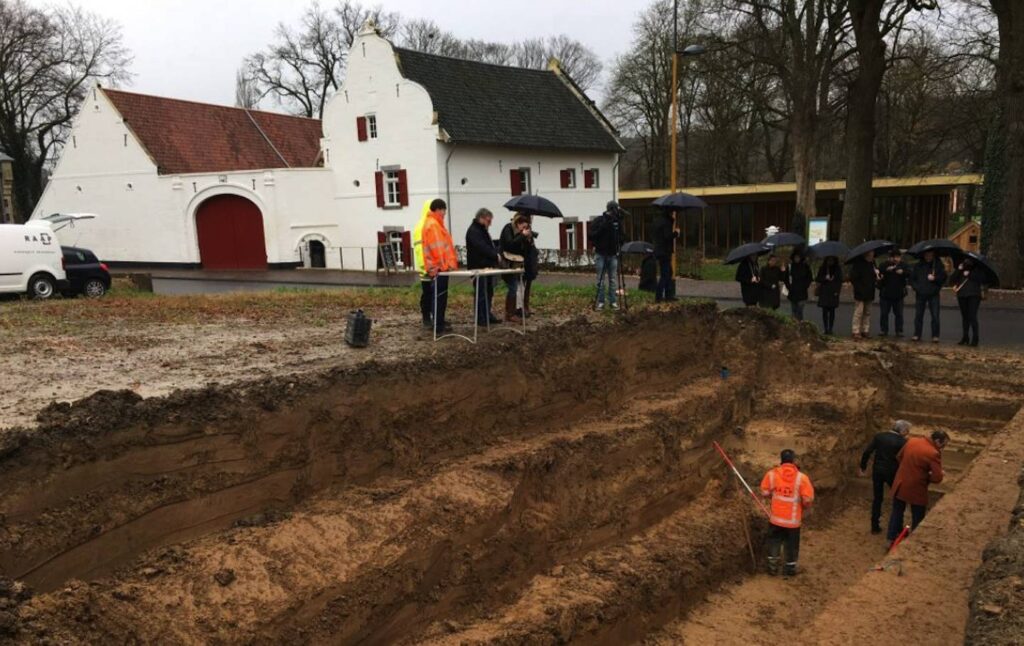Replica of the Via Belgica and a Milestone
Sint-Gerlach, Valkenburg
Step onto the Via Belgica, the 400-kilometre-long Roman highway that connected the French coast with the German Rhineland. This golden-yellow replica lies only 50 metres away from the original road, on Sint Gerlach street near the château of the same name.
Building the Via Belgica required great knowledge and muscle power: the surface had to be as straight and level as possible. Roman legionaries were employed for the heavy digging. A hardened surface was then laid down, which in South Limburg consisted of gravel, loam and pieces of limestone.
Just like this replica, the paved section was about eight metres wide. Carts and wagons travelled back and forth across it, as the ruts in the road surface reveal. Riders and pedestrians used the unpaved paths on either side. In total, such a main road could be 20 to 25 metres wide.
Along these Roman highways, a milestone was placed every mile (about 2.2 km), bearing a Latin inscription. The earliest milestones indicated the distance to important settlements, so travellers knew exactly how far they still had to go. Later, these stones were also used as propaganda by and for emperors. The inscription on the replica you see here reads:
Imp(erator) Caesar Divi F(ilius) Augustus Imp(erator) IX Tribunicia Potest(ate) IV
“Commander-in-chief, Emperor Augustus, son of the deified one, emperor for the ninth time, tribune for the fourth time.”




